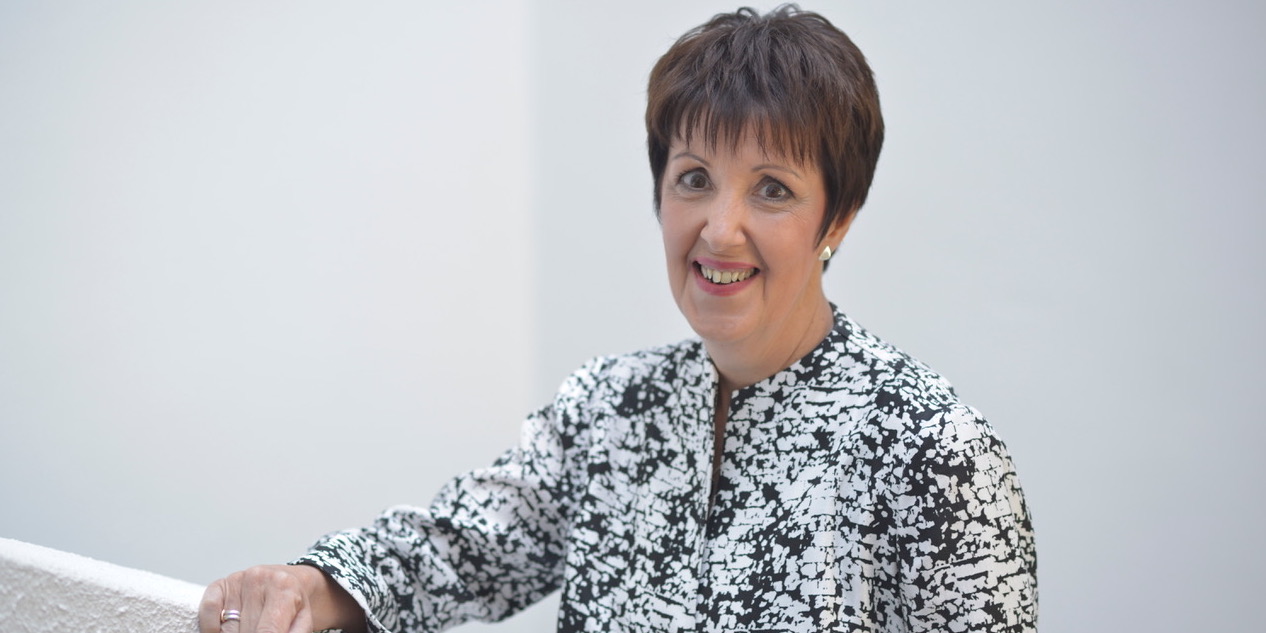
A successful experiment with virtual care
CASE STUDY – The Covid-19 pandemic has accelerated the application of Virtual Healthcare across the world. In South Australia, this has been implemented in urgent care.
Words: Pamela Everingham, Darren Daff and Denise Bennett
In South Australia, COVID cases were minimized through border restrictions until late 2021. As the state was re-opened, SA Health was committed to supporting initiatives that could rapidly provide more capacity to the health system – particularly for emergency and urgent care.
We developed a concept based on what we learned from the data and insights from clinicians and consumers. Around 90% of patients calling 000 (the emergency number) ended up in the Emergency Department (ED), but more than 40% of these patients were discharged without admission. Could the care they needed be provided without them having to leave home at all? If so, would this deliver a better patient experience and preserve the ED capacity for those who need it?
Partnering with the SA Ambulance Service (SAAS) and SA Digital Health, we saw great opportunity to offer alternative care pathways, bringing senior clinicians into patient homes, aged-care and regional facilities through the use of digital technology. We hoped to avoid unnecessary transfers to already overburdened EDs, by instead delivering the right care at home and through community-based services. So, our small team developed a proposal for a service that we could stand up rapidly, which was approved by SA Health, and the South Australian Virtual Care Service (SAVCS) was born.
In eight short weeks, we were able to stand up this innovative service, located in the Tonsley Innovation District, a site that, 15 years ago, housed the Mitsubishi car manufacturing plant. It is the location where our healthcare colleagues first went to see and learn about Lean Thinking, when Australian lean healthcare was taking its first steps. To develop the best service we could, in the fastest time, we called on our colleagues from Lean Enterprise Australia (LEA) to provide some support and employed the Agile methodology to help us break the work down and focus on our daily milestones. Daily huddles kept us connected and aligned and helped us bring an increasing number of staff and partners together, most of whom had never worked together before.
On our first day of collaboration with LEA, we developed seven guiding principles that we have used constantly over the past 10 months to guide the way we work, the way we lead, what we focus on and our decision making.

Our core “value stream” starts with a call through a digital platform from the on-scene ambulance team. The call is triaged, registered by our team of nurses and Health Navigators (HNs) paramedics. The paramedic on-scene then speaks to an experienced physician within 15 minutes. The physician undertakes a video telehealth review with the patient and their family or carer if present, and with the support of the on-scene clinician, assesses them and determines the course of action. An experienced nurse from the VCS may be included in call with the care team to support care management. Calls last between 20 and 60 minutes, depending on the complexity of the case.

Between December 2021 and September 2022, we have managed over 8,000 referrals, partnering with our on-scene paramedics in delivering virtual care to patients at their place of residence Long waits in the Emergency Department are avoided for 75% of patients who use the VCS, as care can be provided to them in their home or community.
Every day, we track the experience of our SAAS (ambulance) partners with a Net Promoter Score and seek to understand the things that are not working well as a basis for improvement.
In addition to the ambulance pathway, we are now developing other value streams. These include support to rural patients and clinicians by providing virtual access to specialists to address urgent care needs and to assist with organising transfers to metropolitan hospitals when required. Direct pathways to clinicians in Residential Aged Care Facilities also commenced in October after a successful two month pilot.
We actively seek feedback from our consumers and referring clinicians too. Some of their comments have included:
“I have done 2 virtual appointments now for my mother who is in a nursing home, and I have been happy with both consultations.”
“The paramedics needed advice to help me, and the doctor helped to give clarity about my condition.”
“The doctor was clear and simple, no ‘medi-speak’. I felt confident that they got it right. The nurse had a great sense of humour but was professional too.”
LEARNING AND EXPERIMENTATION – OUR ENABLERS
We have invested in and built learning into our every-day work. This was a deliberate decision, and like our service, our learning system has experienced several cycles of PDCA. The learning system has been integral to engaging all staffing, providing a safe environment to learn and ask questions, and harnessing collective skills and experience. The learning system includes the following practices:
- Daily Improvement Ideas – “Improvement Slips”
From the first day of operation, we implemented a transparent system of capturing the ideas and the problems from the team. Through “improvement slips”, we apply small adjustments to our processes to solve the daily problems we unearth as we go about our work. Everyone can share ideas on how to solve problems and improve outcomes for patients. This approach proved useful from the start: the first few weeks, there were several problems, many of which were related to the speed at which we had launched the VCS. Ideas from staff have also helped us improve layout, communication, and care processes. With improvement slips, we are empowering people to solve the problems as they encounter them, rather than waiting for an answer ‘from the top’.
To date, team members have raised 265 improvement slips and we have implemented or resolved 98% of these, with a median time of 7 days from idea to resolution. Our Improvement Leads increasingly work with team members to develop their problem-solving skills by working through their improvement ideas.
- Learning Time for Problem Solving
Time for learning is protected each day, and twice a week this takes the form of problem-solving sessions where a team is brought together to look at a bigger issue or process improvement, often too big to be tackled as part of the daily system. As the dedicated Improvement Leads develop the skills of team members, they are able to facilitate these sessions, mapping processes, asking the 5 whys to get to the root causes of problems, and developing countermeasures. The success of these sessions can be attributed to high team engagement and leadership commitment to this protected time.

- Daily Huddle
The most important daily practice is the daily huddle, where the team comes together to prepare for the day ahead. The huddle has been instrumental in developing our relationships with our partners from SAAS, who now form an integral part of our VCS team. We clarify everyone’s responsibilities, reflect on the previous day’s performance and problems, and share a patient story. In our rapidly changing environment, the huddle is vital to keep the team abreast of current experiments, service developments, and any technology issues we might be experiencing. The forum is also a great time to gauge staff wellbeing and whether any team member might need some extra help from their colleagues.
What we are seeing at VCS is a democratization of improvement: changes to the process are suggested and made by value creators, not by steering committees or top management.
Another benefit of the Learning System has been the fact that it helped build closer relationships with the South Australia Ambulance Service: two very different cultures came together during the huddle and gradually began to understand each other.
- Living Lab
Our Living Lab provides a structure to identify and progress bigger, strategic improvements that require more time and resources for design, development, testing and evaluating. These are problems or innovations that cannot be solved in the daily work, requiring changes or disruptive ideas that can have an impact on the entire process. Here’s a couple of examples.
One of our team members suggested we try and integrate the use of digital stethoscopes to assist medical staff in completing an enhanced virtual assessment. We designed a proof of concept to test whether using a digital stethoscope to remotely listen to the chest and heart sounds would reliably provide doctors with the information they needed. Testing by our senior clinicians revealed limitations with the audio quality from the digital stethoscope. This prevented us from making a significant investment which may not have delivered value.
The other example is the development of a triage prediction model. Using patient demographics and vital signs, we can predict whether a patient is likely to need to go to an ED rather than being cared for in the community by the VCS team. This would mean the triage clinician could advise the ambulance team to take the patient straight to ED after asking a few questions, thus avoiding the need to wait to see the VCS doctor. Our first model did not show much difference between the accuracy of the algorithm and triage clinician, so we did not proceed and went back to the drawing board to work on the algorithm. However, we found another use for our model to help inform the design of new pathways. Although it was designed for one purpose, we ended up using it for another – all enabled by our Living Lab processes.
Another great contribution of the Living Lab was an experiment to increase the nurse care coordinator participation in the virtual call with the doctor and patient, which reduced the overall time spent on each patient call by 37% – thus releasing more capacity into the VCS. It also increased the utilization of our skilled nursing staff, balanced the workload across the team and provided more opportunity for sharing knowledge across craft groups. This has a positive impact on morale. This is proof that the Living Lab is really a vehicle for innovation in healthcare, bringing practical day-to-day solutions to day-to-day problems.

ADDED BENEFITS OF A VIRTUAL CARE SERVICE
Virtual care offers many opportunities to provide more timely and equitable acute care, beyond traditional hospital walls and closer to where communities and people live. In our work, it has enabled patients to get in touch with a senior clinician very quickly and has the potential to to engage with priority population groups like the Aboriginal Australians and provide timely and culturally appropriate care. Virtual Care has also proved advantageous for patients and clinicians living and working in isolated regional areas by providing virtual access to specialists thus reducing the need for unnecessary long-distance travel. Indeed, we can take virtual care to people in the environment in which they feel most comfortable and facilitate access to pathways across the system tailored to their individual needs.
We have observed that using technology to deliver care has, somewhat paradoxically, led clinicians to focus more on fundamental clinical skills, enabling more appropriate and targeted use of advanced investigations which are not so immediately available. Diagnostic and management plans are developed with consumers, taking into account their wishes and clinical needs, rather than the generic approach seen so frequently in modern health care – enabling a values based approach to delivering high quality, patient centred, digitally enabled health care.
To ensure our virtual service provides safe and high quality care we ensured that we built in a robust evaluation process from the very beginning of the service to monitor patient outcomes and experiences on a daily basis. Our experiment has demonstrated that virtual care is not only possible, but safe, is a positive patient experience and is very effective in providing patients with timely access to a senior clinician so that an appropriate plan of care can be developed and implemented
To develop the Virtual Care Service, we took our experience and understanding of the urgent care process and systems in a bricks and mortar setting and applied them to a virtual environment. In a short time, we got a service up and running that has preserved system capacity and delivered exceptional patient experience. We now have the opportunity to challenge some of our long-held practices, to re-think how we work and discover what is possible by creating new pathways and innovative applications in partnership.

THE AUTHORS



Read more


INTERVIEW – Rose Keanly discusses the role of lean in a strategic business transformation in the financial services sector and the dos and don’ts of bringing lean to a large organization.


FEATURE – In this new series, the author will walk us through some uncommon ways to apply lean – with a particular focus on establishing productive and enjoyable relationships. In the first instalment, he introduces the concept of lean parenting.


FEATURE – To successfully transform, we need to change our “theory of success”. The authors discuss the obstacles managers face along the way.


CASE STUDY – The reimbursement department of the largest independent insurance company in Brazil has brought together lean and digitalization to improve its service to customers.

